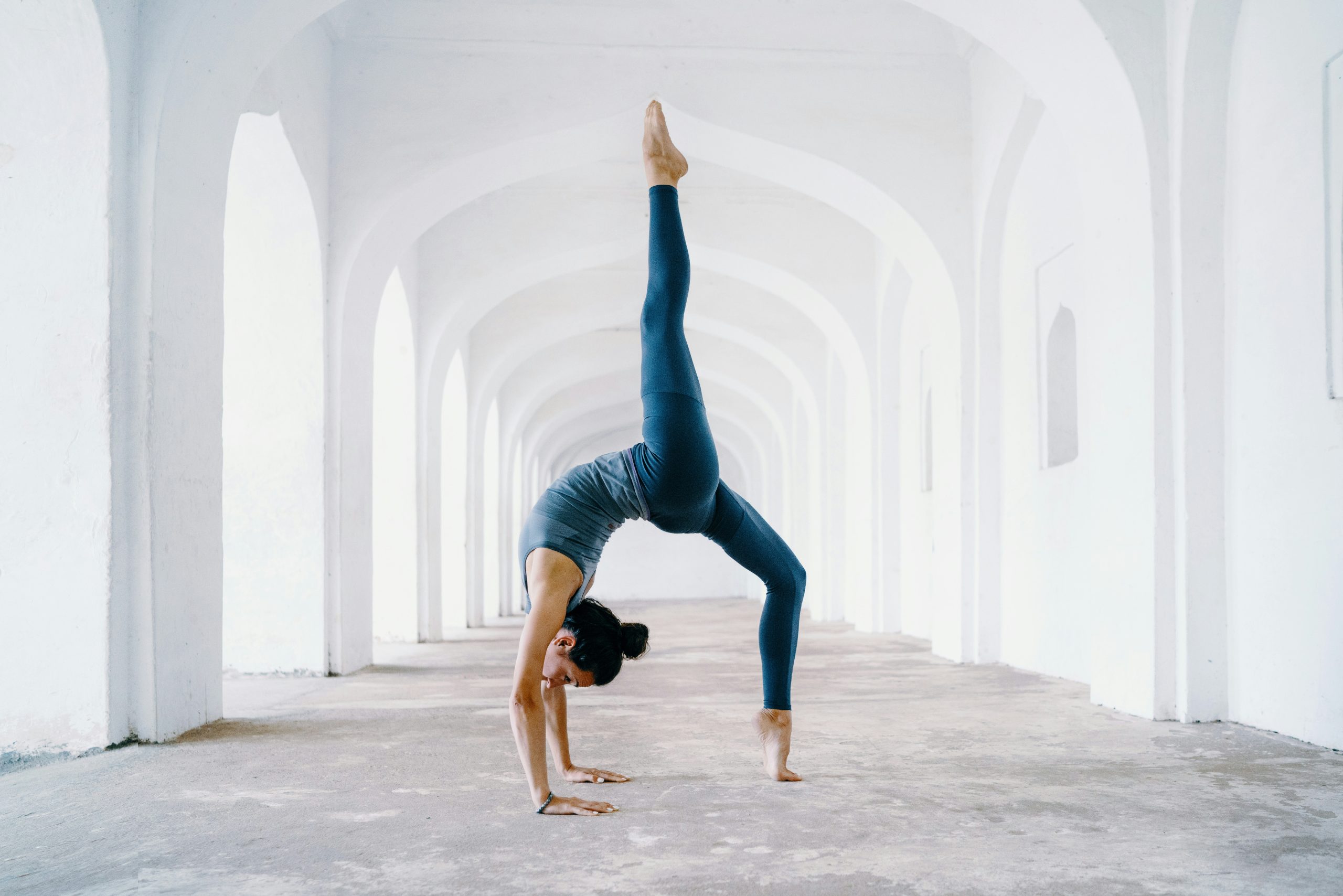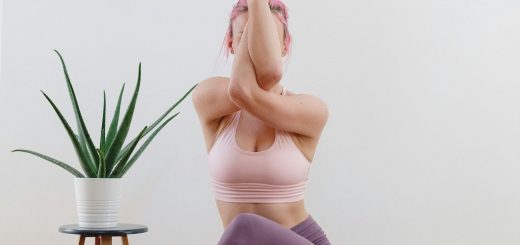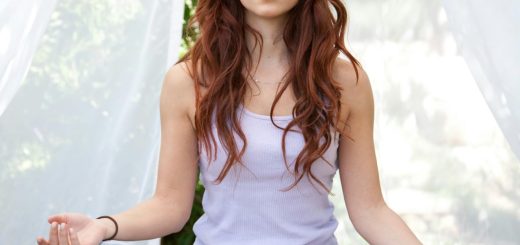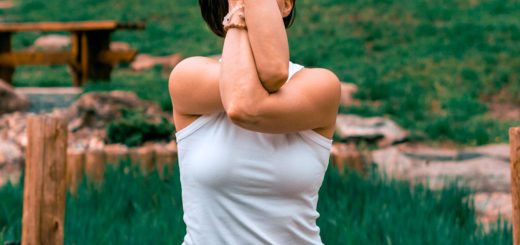Vinyasa Yoga: Flowing Through Poses with Breath

Hey there, amazing readers! 🖐️ Just a quick note: yes, we know there are a lot of ads here. Trust us, we get it—it’s not the prettiest look, but they help us keep this blog alive and kicking. Those pesky little ads cover the costs of all the behind-the-scenes magic, from hosting and tech stuff to creating content we hope you’ll love.
We’re committed to delivering quality posts, and your support (even just sticking around despite the ads) means everything to us. So, bear with us, and thanks for helping us keep the good vibes rolling. Now, on to the fun stuff! 😉
TRANSLATE BUTTON AT THE END OF THE ARTICLE
Introduction to Vinyasa Yoga
Vinyasa yoga, often referred to as "flow" yoga, is a dynamic practice that synchronizes movement with breath.
This style of yoga focuses on the continuous flow from one pose to the next, creating a seamless sequence of movements.
Vinyasa classes are known for their creative sequencing, providing a challenging yet accessible practice for practitioners of all levels.
The word "vinyasa" can be translated to mean "arranging something in a special way," emphasizing the intentional and mindful flow of movements in this practice.
Vinyasa yoga is a popular choice for those looking to build strength, flexibility, and mindfulness.
The fluid nature of the practice allows individuals to connect with their breath, creating a moving meditation that can help calm the mind and increase focus.
Whether you are a seasoned yogi or a beginner, Vinyasa yoga offers a space to explore movement, breath, and self-awareness in a supportive and encouraging environment.
Benefits of Vinyasa Flow
The benefits of practicing Vinyasa yoga are vast and varied.
One of the primary advantages is the improvement of physical strength and flexibility.
By moving through a series of poses that flow seamlessly together, practitioners can build muscle tone, increase endurance, and enhance their range of motion.
Additionally, the continuous movement in Vinyasa helps improve cardiovascular health, making it a great option for those looking to boost their overall fitness levels.
Another key benefit of Vinyasa yoga is its ability to cultivate mindfulness and presence.
The focus on linking breath with movement encourages practitioners to stay present in the moment, fostering a sense of awareness and concentration.
This can have a profound impact on reducing stress and anxiety, promoting mental clarity, and enhancing overall well-being.
The flowing nature of Vinyasa can also help improve coordination and balance, as practitioners learn to move fluidly between poses with grace and control.
Importance of Breath in Vinyasa
In Vinyasa yoga, breath is considered the foundation of the practice.
The synchronization of movement with breath not only helps create a seamless flow between poses but also serves as a tool for cultivating mindfulness and focus.
By linking each movement to an inhale or exhale, practitioners can deepen their awareness of the present moment and connect more deeply with their practice.
Proper breathing techniques in Vinyasa yoga can also help regulate the nervous system, promoting relaxation and reducing stress.
The practice of Ujjayi breath, often used in Vinyasa classes, involves breathing in and out through the nose with a slight constriction in the back of the throat, creating a gentle oceanic sound.
This type of breath work can help calm the mind, energize the body, and create a sense of inner peace.
Flowing Through Sun Salutations
Sun Salutations, or Surya Namaskar, are a key component of Vinyasa yoga sequences.
These dynamic sequences of poses are typically performed at the beginning of a Vinyasa class to warm up the body and create a sense of flow.
Sun Salutations involve a series of movements that synchronize with the breath, including forward folds, lunges, and backbends.
As practitioners flow through Sun Salutations, they have the opportunity to connect with their breath, cultivate heat in the body, and prepare for the more challenging poses to come.
Sun Salutations are not only a great way to build strength and flexibility but also serve as a moving meditation, allowing practitioners to focus their attention inward and set an intention for their practice.
Building Strength and Flexibility
Vinyasa yoga is an excellent practice for building both strength and flexibility.
The dynamic nature of the sequences challenges the muscles, helping to tone and strengthen the entire body.
Poses such as Plank, Chaturanga, and Warrior variations engage the core, arms, and legs, while backbends and inversions help to open up the chest, shoulders, and hips.
In addition to strength, Vinyasa yoga also emphasizes flexibility and mobility.
The continuous flow between poses encourages practitioners to move with ease and grace, promoting increased range of motion in the joints and muscles.
Over time, consistent practice can lead to greater flexibility, allowing practitioners to deepen their practice and explore more advanced poses.
Finding Balance and Focus
Balance is a key component of Vinyasa yoga, both on and off the mat.
As practitioners move through sequences that require stability and control, they have the opportunity to cultivate physical and mental balance.
Poses such as Tree Pose, Eagle Pose, and Dancer’s Pose challenge practitioners to find their center of gravity and focus their attention on the present moment.
In addition to physical balance, Vinyasa yoga can help cultivate mental focus and concentration.
The continuous flow of movements requires practitioners to stay present and attentive, honing their ability to focus on the task at hand.
This enhanced sense of focus can carry over into other areas of life, helping individuals navigate challenges with clarity and determination.
Connecting Mind, Body, and Breath
One of the core principles of Vinyasa yoga is the connection between mind, body, and breath.
This holistic approach to the practice encourages practitioners to unite these three elements, creating a sense of harmony and integration.
By synchronizing movement with breath, individuals can cultivate a deeper awareness of their physical sensations, thoughts, and emotions.
The connection between mind, body, and breath in Vinyasa yoga can lead to a greater sense of self-awareness and self-acceptance.
As practitioners move through sequences with intention and presence, they have the opportunity to explore their inner landscape, releasing tension, and finding moments of stillness and peace.
This mind-body-breath connection can be a powerful tool for personal growth and transformation.
Modifications for All Levels
Vinyasa yoga is a versatile practice that can be modified to suit practitioners of all levels.
Whether you are a beginner or an experienced yogi, there are ways to adapt the practice to meet your individual needs and abilities.
Teachers often offer variations and modifications for poses, allowing students to find a version that works best for their body.
For beginners, modifications may involve using props such as blocks, straps, or blankets to support the body in poses.
Teachers may also offer gentler variations of poses or encourage students to take breaks as needed.
Advanced practitioners, on the other hand, may be challenged with more complex variations or sequences that require greater strength and flexibility.
Common Vinyasa Poses
Vinyasa yoga incorporates a wide range of poses that flow together seamlessly to create dynamic sequences.
Some common poses you may encounter in a Vinyasa class include:
Downward-Facing Dog (Adho Mukha Svanasana)
Plank Pose
Chaturanga Dandasana
Warrior Poses (Virabhadrasana)
Tree Pose (Vrksasana)
Seated Forward Fold (Paschimottanasana)
Bridge Pose (Setu Bandhasana)
Cobra Pose (Bhujangasana)
Child’s Pose (Balasana)
Corpse Pose (Savasana)
These poses can be combined in various ways to create a unique and challenging Vinyasa flow that targets different areas of the body and promotes overall strength, flexibility, and balance.
Sequencing and Transitioning
Sequencing and transitioning are essential aspects of Vinyasa yoga that contribute to the fluidity and coherence of the practice.
A well-designed sequence will guide practitioners through a series of poses that build upon each other, creating a sense of progression and continuity.
Transitions between poses should be smooth and intentional, allowing for a seamless flow of movement and breath.
Teachers often use verbal cues and demonstrations to help students navigate transitions between poses in a Vinyasa class.
By providing clear instructions and guidance, instructors can support students in moving mindfully and with awareness.
Practitioners are encouraged to listen to their bodies, honor their limitations, and make modifications as needed to ensure a safe and enjoyable practice.
Preparing for a Vinyasa Class
Before attending a Vinyasa yoga class, there are a few things you can do to prepare yourself for the practice:
Hydrate: Drink plenty of water before class to stay hydrated throughout the practice.
Eat a light meal: Avoid eating a heavy meal right before class to prevent discomfort during poses.
Arrive early: Give yourself time to settle into the space, set up your mat, and prepare mentally for the practice.
Communicate with the teacher: Let your instructor know if you have any injuries or limitations so they can offer modifications as needed.
Breathe: Begin to focus on your breath before class starts to center yourself and create a sense of calm.
By taking these simple steps, you can set yourself up for a rewarding and fulfilling Vinyasa practice that will leave you feeling energized, strong, and centered.
Conclusion: Embracing the Flow
In conclusion, Vinyasa yoga offers a unique and transformative practice that combines movement, breath, and mindfulness in a dynamic and creative way.
By flowing through poses with intention and awareness, practitioners can build strength, flexibility, and balance while cultivating a sense of inner peace and presence.
The importance of breath in Vinyasa underpins the practice, serving as a guide for moving with grace and fluidity.
Whether you are a beginner or an advanced yogi, Vinyasa yoga provides a space for exploration, growth, and self-discovery.
By finding balance, focus, and connection between mind, body, and breath, individuals can unlock the secrets of this ever-evolving practice and experience the myriad benefits it has to offer.
So, roll out your mat, take a deep breath, and embrace the flow of Vinyasa yoga as you journey towards a healthier, happier, and more aligned self.

The Enlightenment Journey is a remarkable collection of writings authored by a distinguished group of experts in the fields of spirituality, new age, and esoteric knowledge.
This anthology features a diverse assembly of well-experienced authors who bring their profound insights and credible perspectives to the forefront.
Each contributor possesses a wealth of knowledge and wisdom, making them authorities in their respective domains.
Together, they offer readers a transformative journey into the realms of spiritual growth, self-discovery, and esoteric enlightenment.
The Enlightenment Journey is a testament to the collective expertise of these luminaries, providing readers with a rich tapestry of ideas and information to illuminate their spiritual path.
Our Diverse Expertise 🌟
While our primary focus is on spirituality and esotericism, we are equally passionate about exploring a wide range of other topics and niches 🌍📚. Our experienced team is dedicated to delivering high-quality, informative content across various subjects ✨.
To ensure we provide the most accurate and valuable insights, we collaborate with trusted experts in their respective domains 🧑🏫👩🏫. This allows us to offer well-rounded perspectives and knowledge to our readers.
Our blog originally focused on spirituality and metaphysics, but we’ve since expanded to cover a wide range of niches. Don’t worry—we continue to publish a lot of articles on spirituality! Frequently visit our blog to explore our diverse content and stay tuned for more insightful reads.






